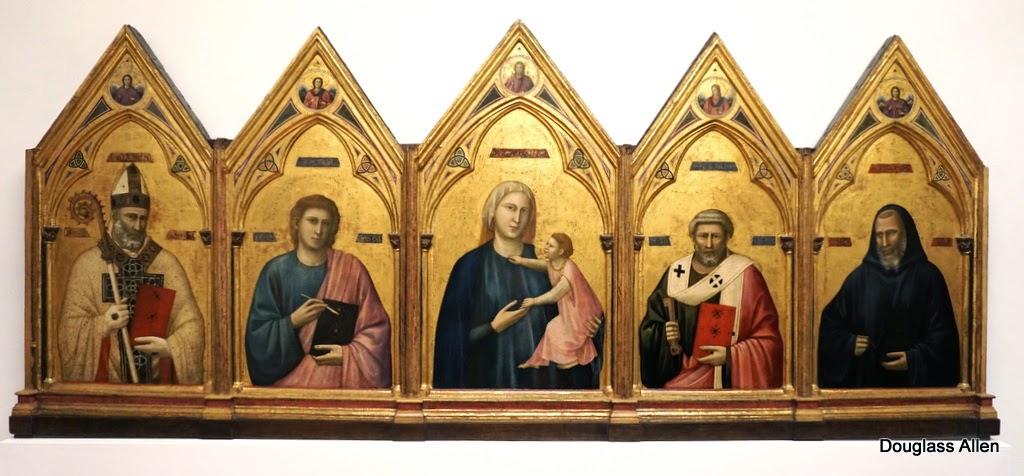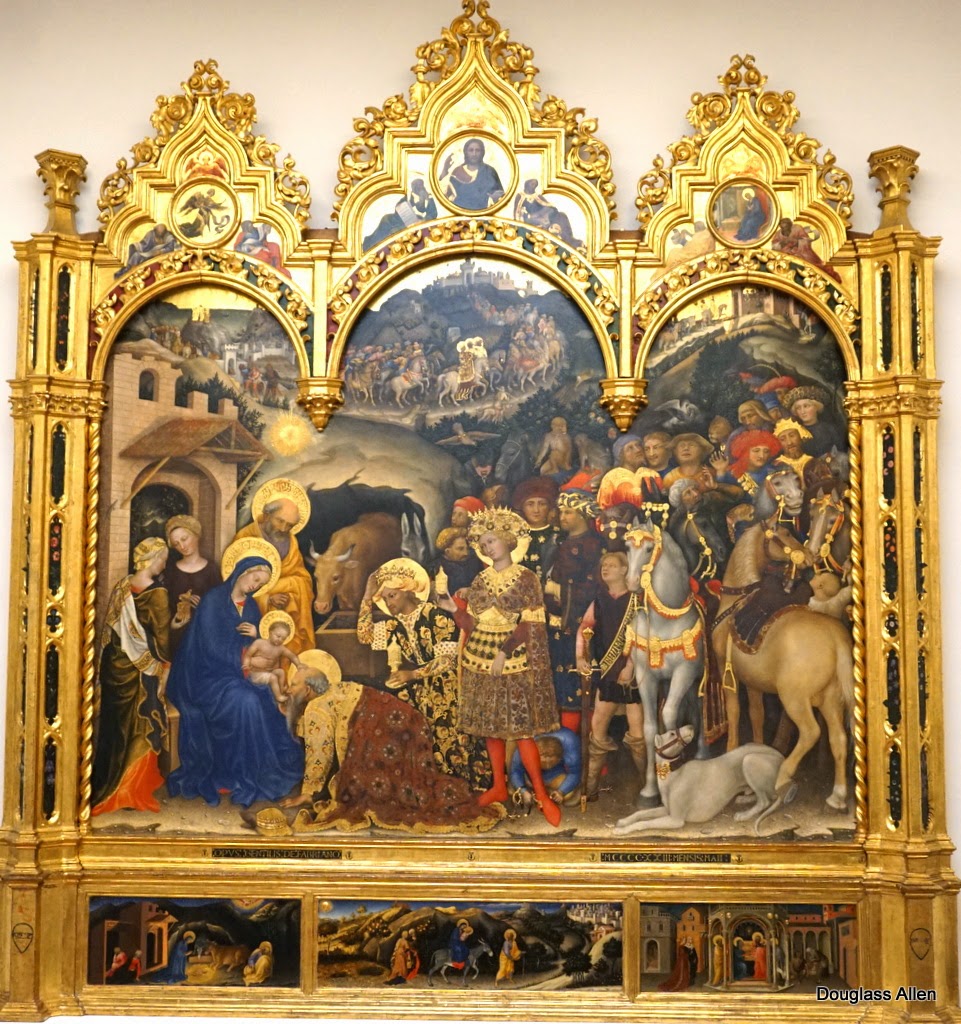Uffizi means "offices," but it quickly became a private and later a public gallery open to the public since 1765.
We began the morning looking at examples of paintings from the 13th and 14th centuries, medieval art styles of Byzantine, Romanesque, and Gothic influence or mostly mixed influence. Almost always religious, with persons depicted more as icons than as flesh and blood, the paintings often had backgrounds of gold leaf, similar to the paintings on many illuminated manuscripts. By the 14th century, painters like Giotto in Florence and the Lorenzetti brothers in Siena introduced more realism and foreshadowed the interest in perspective.
Names of the most artists of the earlier Middle Ages are generally not known. Only as we approach Renaissance times are artists as individuals recognized.
The late Middle Ages painting below made me question some of what I'd read and been told about the rebirth of classical concepts of perspective during the early Renaissance almost 100 years after this painting by Ambrogio Lorenzetti-
But I learned there was a reason for the discontinuity between Giotto and Lorenzetti's work in the early 1300's and what reappeared at the end of the century, The Black Death-
By 1400, a new generation of merchants and bankers, including Giovanni di Bicci de Medici (c. 1360 – 1429), Cosmo's father, had brought renewed wealth to Florence and much of Italy. The new generation included the artists like Monaco, Donatello, Ghiberti, Brunelleschi and so many others whose works are shown elsewhere-
Lorenzo Monaco(1370-1425)- Adoration of the Shepherds

We enjoyed the works of the many famous 15th century artists every day so they are not repeated here.
By the 15th century, many artists specialized in portraits, Bronzino being one of the best-
Paolo Uccello-
And the influence of Venetian painters became more important by the 16th century with their emphasis on color an earlier adoption of oils to replace tempera-
Other examples of Italian humanism are paintings of ancient Greece and Rome. Two of the best known works of the renaissance were probably commissioned by the Medici for their piazza where these pagan works escaped the "bonfires of the vanities" where other such works by Botticelli and others artists were probably burned during the days of the Savonarola republic. The late 1400's is also considered the beginning of the high renaissance.
Primavera 1482
Birth of Venus 1486
Two early works by Michelangelo, perhaps his earliest sculpture and an early 1507 painting-
Twp famous paintings by Raphael, early 16th century, The Boy with an Apple-
and Madonna of the Goldfinch 1506-
One of the greats of the high Renaissance was Titian, the most important member of the Venitian school-
Late 16th century Mannerism style-
After far too little time in the Uffizi, walked the Corridoio Vasario with Prof, Guidetti looking at the many self-portraits and on to Santa Felicita Church to admire Pontormo's frescoes-
We walked by Piti Palace-
And the Grotto-
And on to Santa Felicita Church-
where we were all exhausted and sat down-
Did we see Pontormo's frescoes? I don't know.
and along the Arno-
to dinner at the Bargello restaurant. I don't remember dinner or how we got back to the hotel, but I do remember it had been 12 hours since I had climbed those 414 stairs at Giotto's clock tower as I lay down and asleep at 8:30 PM. Hope you have some recollection of that evening!
GO TO DAY 7 GIARDINO & BRANCACCI CHAPEL OR RETURN TO HOME AND DAY 1















































No comments:
Post a Comment